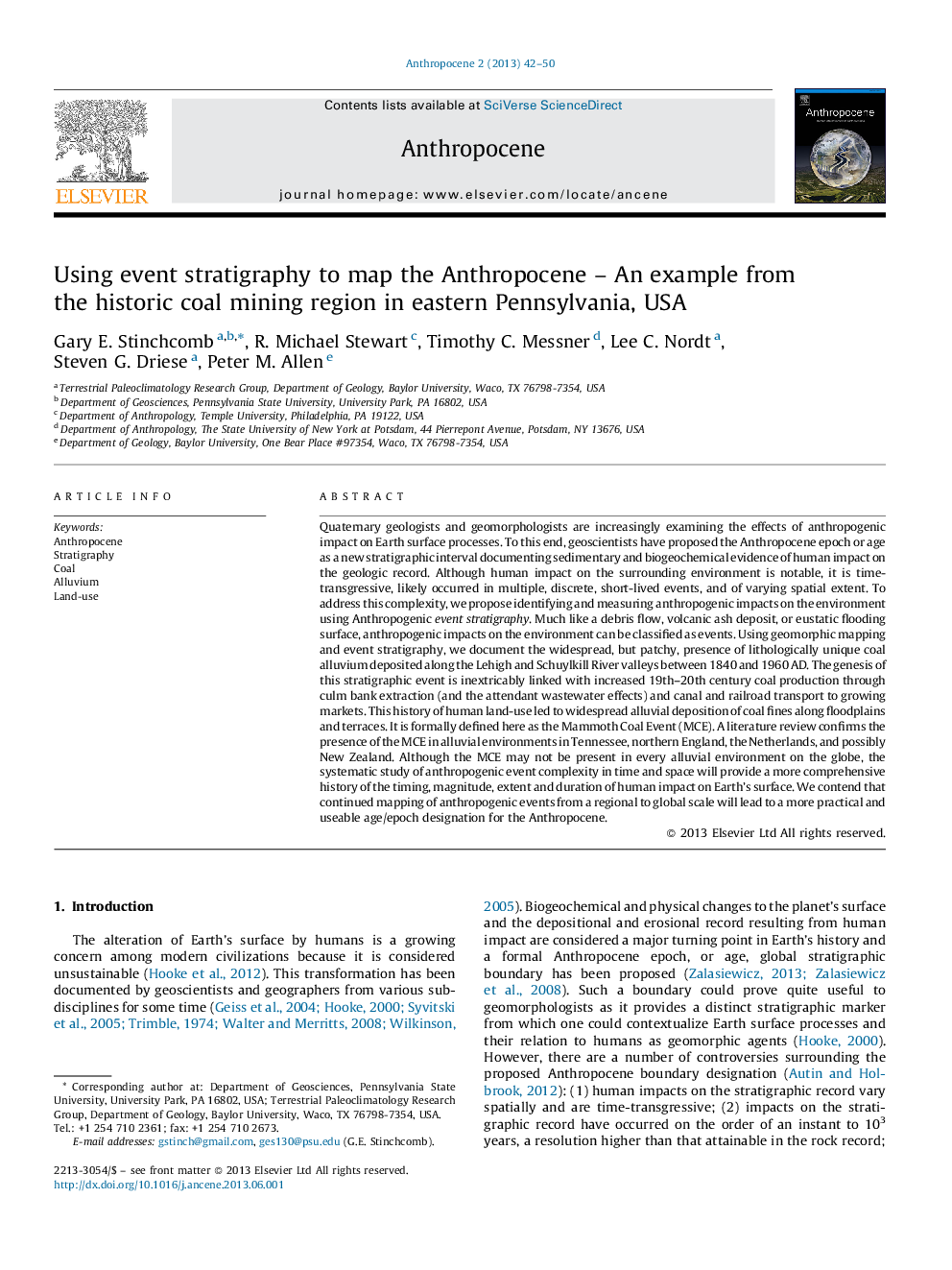| کد مقاله | کد نشریه | سال انتشار | مقاله انگلیسی | نسخه تمام متن |
|---|---|---|---|---|
| 4461930 | 1621523 | 2013 | 9 صفحه PDF | دانلود رایگان |

Quaternary geologists and geomorphologists are increasingly examining the effects of anthropogenic impact on Earth surface processes. To this end, geoscientists have proposed the Anthropocene epoch or age as a new stratigraphic interval documenting sedimentary and biogeochemical evidence of human impact on the geologic record. Although human impact on the surrounding environment is notable, it is time-transgressive, likely occurred in multiple, discrete, short-lived events, and of varying spatial extent. To address this complexity, we propose identifying and measuring anthropogenic impacts on the environment using Anthropogenic event stratigraphy. Much like a debris flow, volcanic ash deposit, or eustatic flooding surface, anthropogenic impacts on the environment can be classified as events. Using geomorphic mapping and event stratigraphy, we document the widespread, but patchy, presence of lithologically unique coal alluvium deposited along the Lehigh and Schuylkill River valleys between 1840 and 1960 AD. The genesis of this stratigraphic event is inextricably linked with increased 19th–20th century coal production through culm bank extraction (and the attendant wastewater effects) and canal and railroad transport to growing markets. This history of human land-use led to widespread alluvial deposition of coal fines along floodplains and terraces. It is formally defined here as the Mammoth Coal Event (MCE). A literature review confirms the presence of the MCE in alluvial environments in Tennessee, northern England, the Netherlands, and possibly New Zealand. Although the MCE may not be present in every alluvial environment on the globe, the systematic study of anthropogenic event complexity in time and space will provide a more comprehensive history of the timing, magnitude, extent and duration of human impact on Earth's surface. We contend that continued mapping of anthropogenic events from a regional to global scale will lead to a more practical and useable age/epoch designation for the Anthropocene.
Journal: Anthropocene - Volume 2, October 2013, Pages 42–50